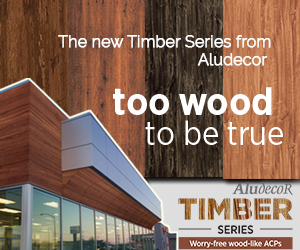As the world becomes increasingly focused on sustainability and the role of architecture in mitigating climate change, the future of facade design is at the forefront of innovation. Facade design has come a long way from simply serving as a barrier between interior and exterior spaces, with architects and designers using materials, colors, and textures to create visually striking and energy-efficient buildings. In this article, we will explore five trends in facade design that will shape the future of architecture.


Biophilic Facades:
As humans, we have an inherent connection to nature, and biophilic design aims to incorporate natural elements into our built environment. Biophilic facades use natural materials such as wood, plants, and stone to create a sense of calm and connection with the natural world. These facades also provide a range of environmental benefits, such as improved air quality, increased biodiversity, and energy savings.


Smart Facades
In the age of technology, buildings are becoming increasingly intelligent, and facades are no exception. Smart facades are designed to respond to changes in the environment and user behaviour. For example, some smart facades are equipped with sensors that detect changes in temperature or light levels and adjust the shading accordingly. Others are designed to generate energy through solar panels or wind turbines.


Parametric Facades
The parametric design uses computer algorithms to generate complex forms and patterns that are difficult to achieve using traditional design methods. Parametric facades are highly customizable and can be designed to respond to specific site conditions or user requirements. They also have the potential to reduce material waste and improve the efficiency of the construction process.


Kinetic Facades
Kinetic facades use moving elements to create dynamic and visually striking facades. These facades can respond to environmental changes, such as wind or sunlight, or to user interaction. Kinetic facades can also improve energy efficiency by adjusting to changing light levels or by creating natural ventilation.


Zero-Carbon Facades
As the world moves towards a zero-carbon future, buildings are becoming increasingly energy-efficient, and facades play a crucial role in achieving this goal. Zero-carbon facades use materials and technologies that reduce the energy consumption of the building and generate renewable energy on-site. These facades can also improve indoor air quality and reduce the building’s carbon footprint.


3D Facades
In recent years, 3D facades have gained popularity in the world of architecture and design, which involves using three-dimensional designs and patterns to create eye-catching and unique facades for buildings.
Read also: Discover #FutureFacades with Aludecor’s 3D Design Innovation
One of the main advantages of 3D facades is their ability to add depth and texture to a building’s exterior. By using advanced computer modelling software, architects and designers can create intricate and complex patterns that add visual interest and dimensionality to a structure. Another benefit of 3D facades is their versatility. They can be created using a wide range of materials, including ACP sheets, Glass, Metal, Stone, and Wood, allowing for high customization and creativity. Additionally, 3D facades can be designed to incorporate functional elements such as shading devices, ventilation systems, and energy-saving features.
Conclusion
The future of facade design is exciting and full of possibilities. As sustainability and user experience become increasingly important in architecture, facades will continue to play a crucial role in creating visually striking and energy-efficient buildings. Biophilic facades, smart facades, parametric facades, kinetic facades, 3D Facades, and zero-carbon facades are just a few examples of innovative and sustainable solutions that will shape the future of architecture.
Frequently Asked Questions
How do biophilic facades improve air quality?
Biophilic facades use plants to filter pollutants from the air and release oxygen, improving indoor air quality.
How do smart facades generate energy?
Smart facades can generate energy through the use of solar panels or wind turbines integrated into the facade.
How are parametric facades designed?
Parametric facades are designed using computer algorithms that generate complex forms and patterns based on specific parameters.
What are the benefits of kinetic facades?
Kinetic facades can improve energy efficiency, create natural ventilation, and provide dynamic and visually striking facades.
What are the benefits of using 3D facades in building design?
3D facades can add depth, texture, and visual interest to a building’s exterior. They can also be designed to incorporate functional elements such as shading devices, ventilation systems, and energy-saving features using a variety of materials, including glass, metal, stone, wood, and aluminium composite panels or other metal composites.
How do zero-carbon facades reduce a building's carbon footprint?
Zero-carbon facades use materials and technologies that reduce the energy consumption of the building and generate renewable energy on-site, reducing the building’s carbon footprint.



